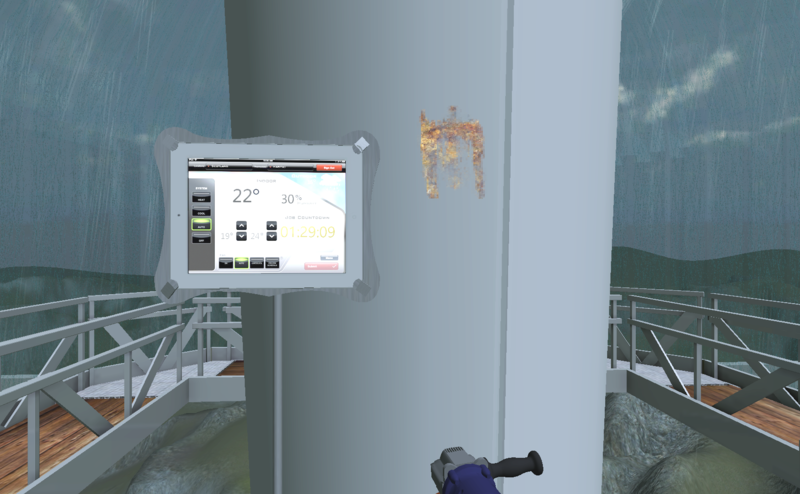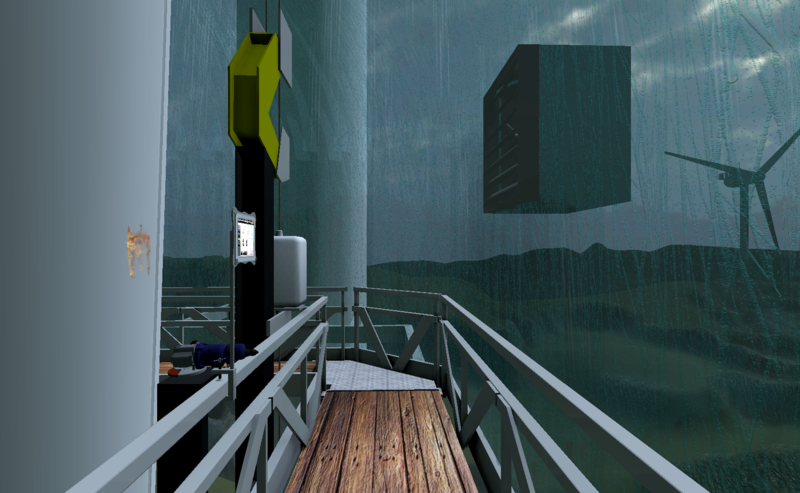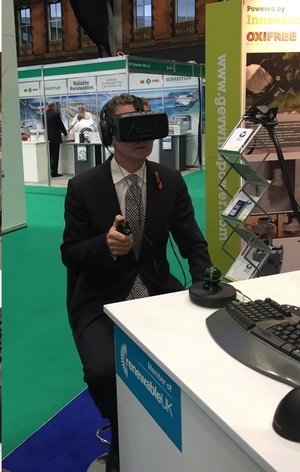News Release from Windmesse.de
Wind Industry Profile of
Windfair Interview with GEV Windpower
Alastair Gadney, Projects Director of GEV Windpower, answered Windfair's questions:
Please describe your pioneering turbine structure for those who haven't seen the presentation at the RenewableUK show.
Alastair Gadney: We launched our inflatable turbine habitat at RenewableUK 2014, which received fantastic feedback and attracted a large number of delegates to our stand, including the attention of senior parliamentarians. Visitors were treated to an interactive experience of the Habitat in action via virtual reality simulation.
Wind, rain, temperature and humidity all significantly impact an engineer’s ability to complete scheduled maintenance. In fact, over 50% of cancelled maintenance days are a direct result of adverse weather conditions. The Habitat is designed to dramatically reduce this number, as engineers will be able to control their environment with blowers and heaters to create the optimum temperature and humidity.

The Habitat is mounted to the outside of the existing blade access platform, which is suspended from the turbine nacelle. A sleeve attaches to the top of the inflatable Habitat and seals around the blade some meters above the platform, ensuring a watertight environment. Engineers will, once on-site, be able to carry out repairs and vital maintenance unhindered by the elements.
How did you come up with the idea for the Habitat structure? Are there any examples in other industries?
Habitat structures have worked well in the oil and gas sector for many years. GEV is a market leader in the provision of field deployed rotor blade maintenance for the wind energy sector. We decided to migrate the principle of an artificial habitat structure across to the wind sector so that we can dramatically reduce the number of cancelled maintenance days.
How far down the road in the development process are you? Do you already have a prototype built or are you still working on computer models?
We are currently in the prototype development phase, with field trials scheduled for early 2015. Modular testing will take place on a live wind turbine site and we are planning to start manufacture soon after.

Does the structure work for all turbine models? Will it be possible to upgrade already running turbines?
The Habitat is dependent on the access platform and the blade type. We intend to be compatible with the vast majority of turbines that we work on and thus our prototyping is focused on 2.3 MW blades at this time.
We will then engage with field owners and operators with a view to include the Habitat structure as an integral element of next generation turbines.
How long do you think it will take until serial production?
We intend to be ready for market early next year (from March 2015 onwards) and will undertake initial assessment amongst our own teams, before taking the Habitat to the wider market.

Gregory Barker, British Minister of State for Energy and Climate Change, at the RenewableUK show.
You can also watch a video of the habitat: gevwindpower.com.
Copyright: All photos by GEV Windpower
- Source:
- GEV Group
- Author:
- Katrin Radtke
- Email:
- presse@windmesse.de
- Link:
- www.gevwindpower.com/...
